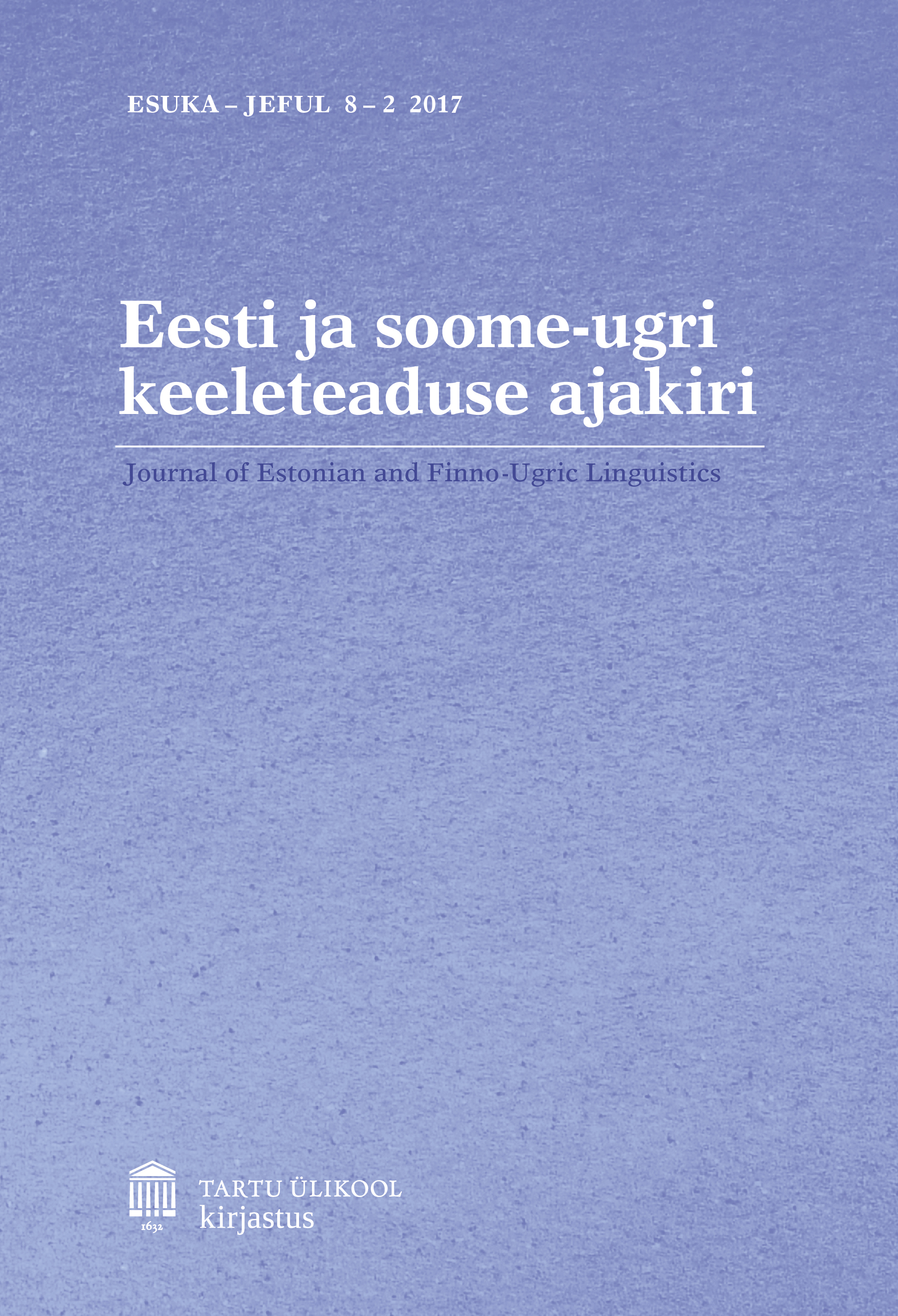Expression of narrow focus in spontaneous Estonian dialogues
DOI:
https://doi.org/10.12697/jeful.2017.8.2.12Keywords:
Estonian, focus, constituent order, sentence accentAbstract
Estonian offers several means for expressing narrow focus, including a choice between a syntactic strategy resulting in marked constituent order, and a prosodic strategy resulting in marked nuclear accent placement. The present study examines the usage of the different focus-marking strategies in spontaneous dialogues, with the primary aim of verifying the hypothesis that when either the syntactic or the prosodic strategy must be used, the prosodic strategy is preferred. The results show an overwhelming preference for keeping both the constituent order and the accent placement unmarked. In the relatively small number of cases where either the syntactic or the prosodic strategy must be chosen, a slight preference for the prosodic strategy can be observed. There also exists a minor strategy of focus fronting, whereby both the constituent order and the nuclear accent placement are marked; the role of this strategy requires further study.
Kokkuvõte. Heete Sahkai: Kitsa fookuse väljendamine eestikeelses suulises dialoogis. Eesti keel võimaldab väljendada kitsast fookust muuhulgas nii moodustajajärje kui primaarse lauserõhu asukoha abil. Artiklis vaadeldakse kitsa fookuse väljendamist reisibüroo dialoogides peamise eesmärgiga kontrollida hüpoteesi, et suulises kõnes eelistatakse süntaktilisele fookuse väljendamisele prosoodilist. Tulemused näitavad tugevat eelistust lausungite suhtes, kus on samaaegselt nii markeerimata moodustajajärg kui ka markeerimata prosoodia. Juhtumeid, kus tuleb valida kas markeeritud moodustajajärg või markeeritud prosoodia, on suhteliselt vähe ning nende põhjal võib järeldada, et prosoodiline markeerimine on tõepoolest mõnevõrra eelistatud. Edasist uurimist nõuab andmestikus vähesel määral esindatud lausealguline fookus, mille puhul on markeeritud nii moodustajajärg kui primaarse lauserõhu asukoht.
Võtmesõnad: fookus; moodustajajärg; lauserõhk; eesti keel


